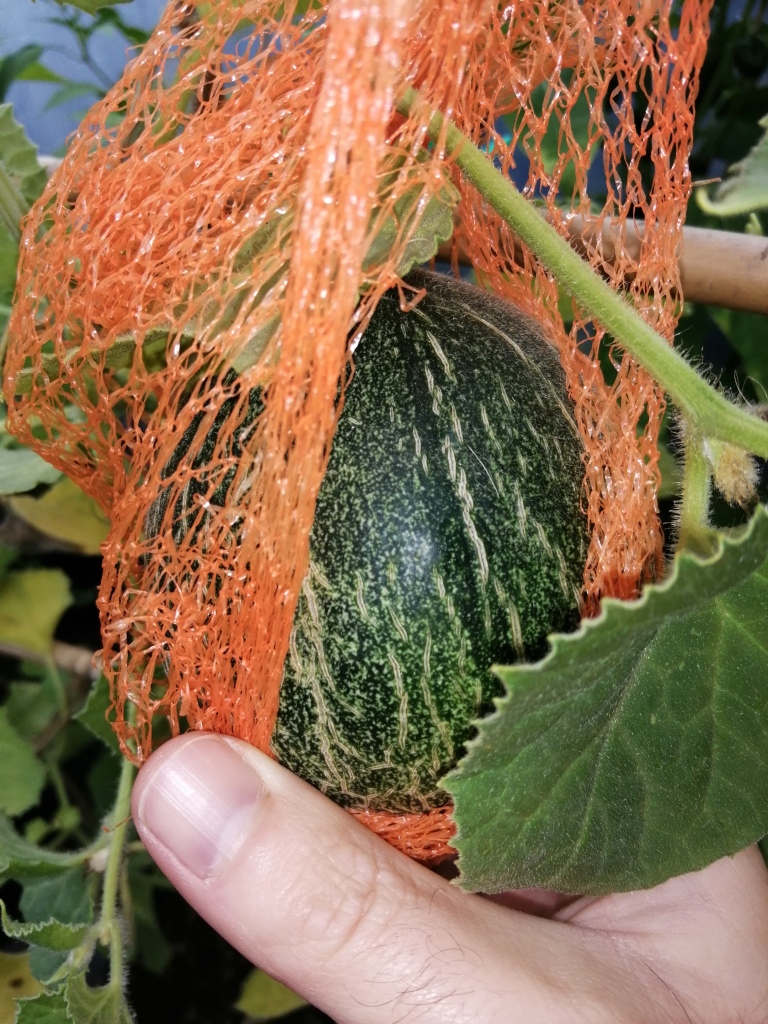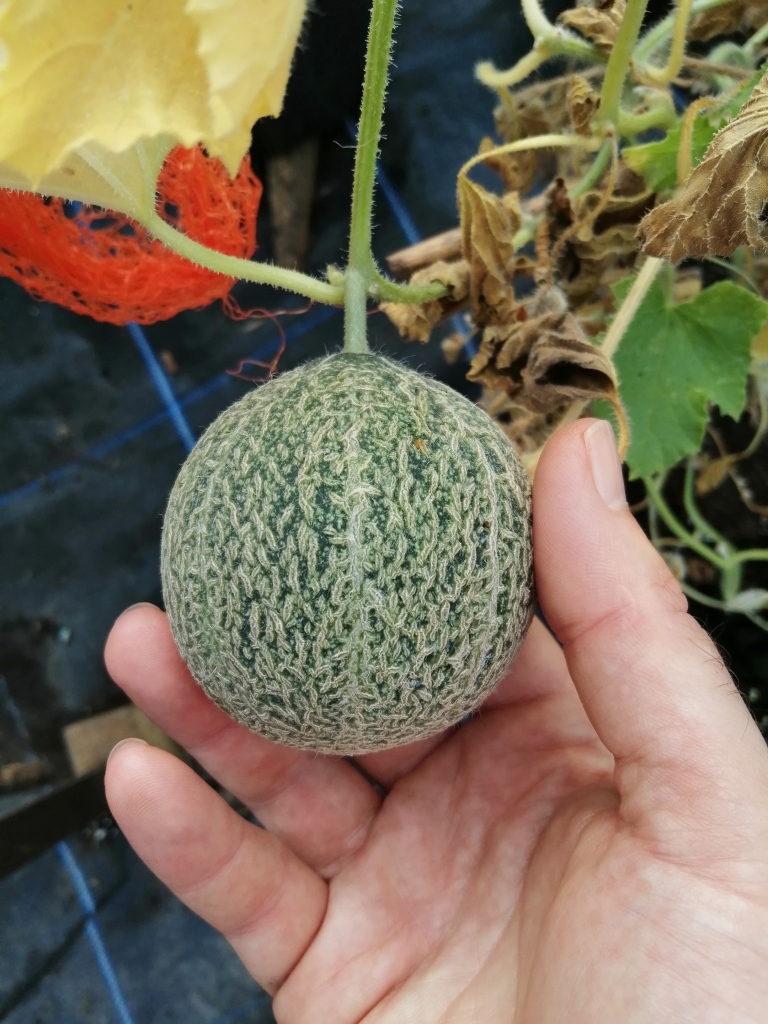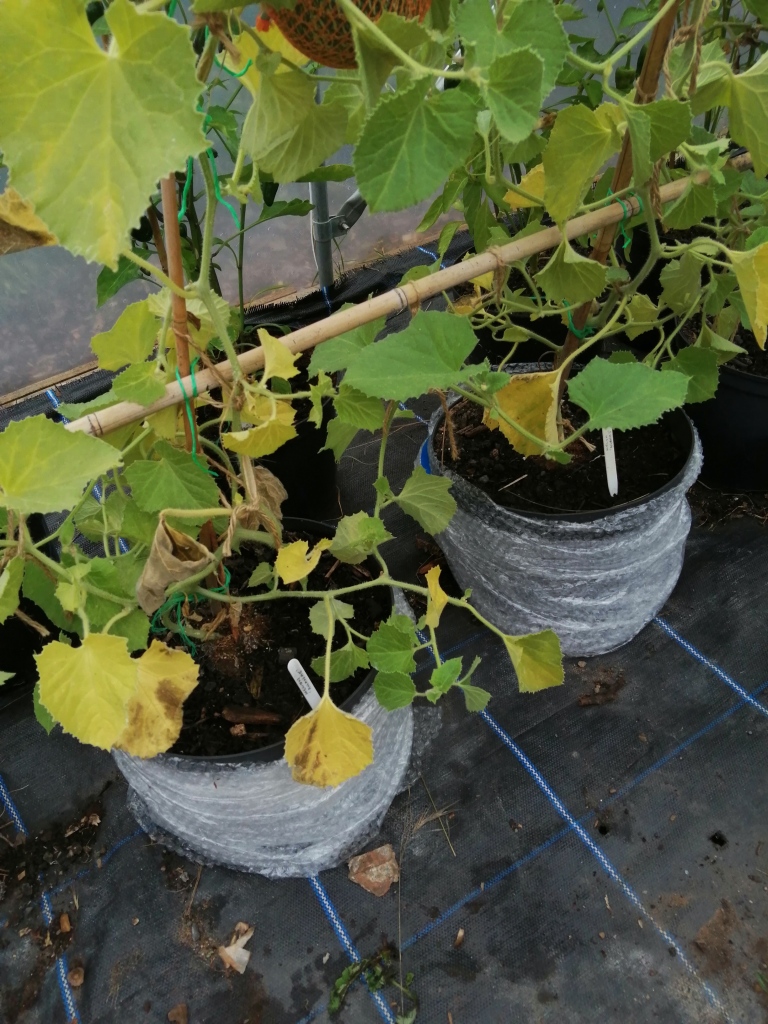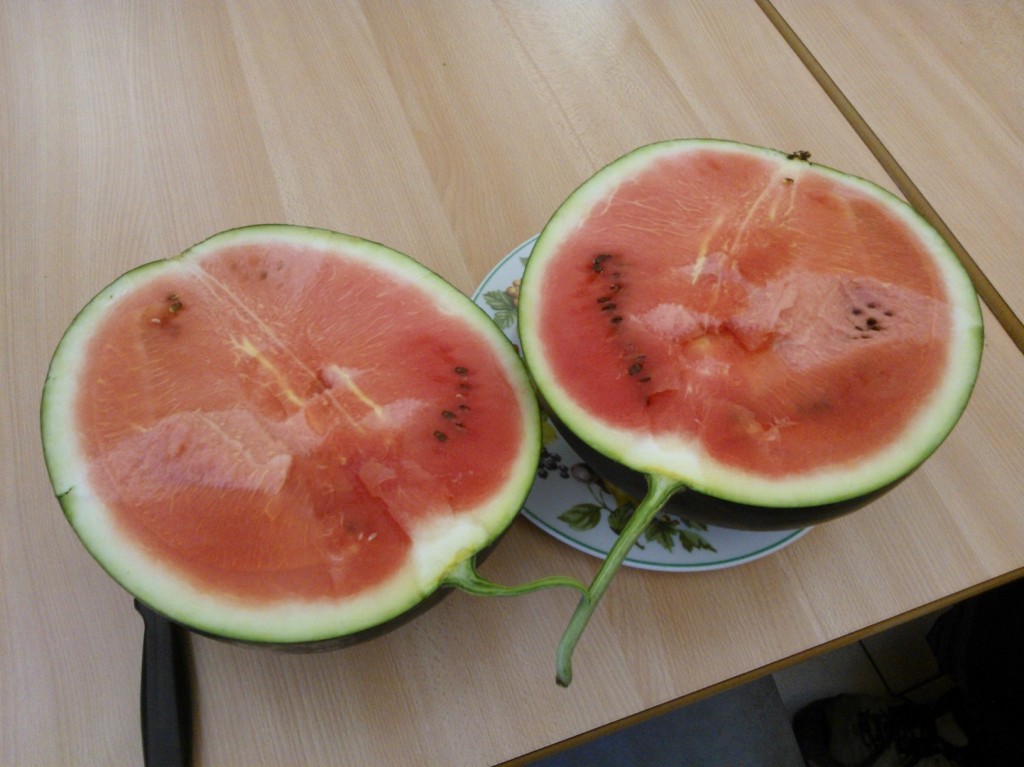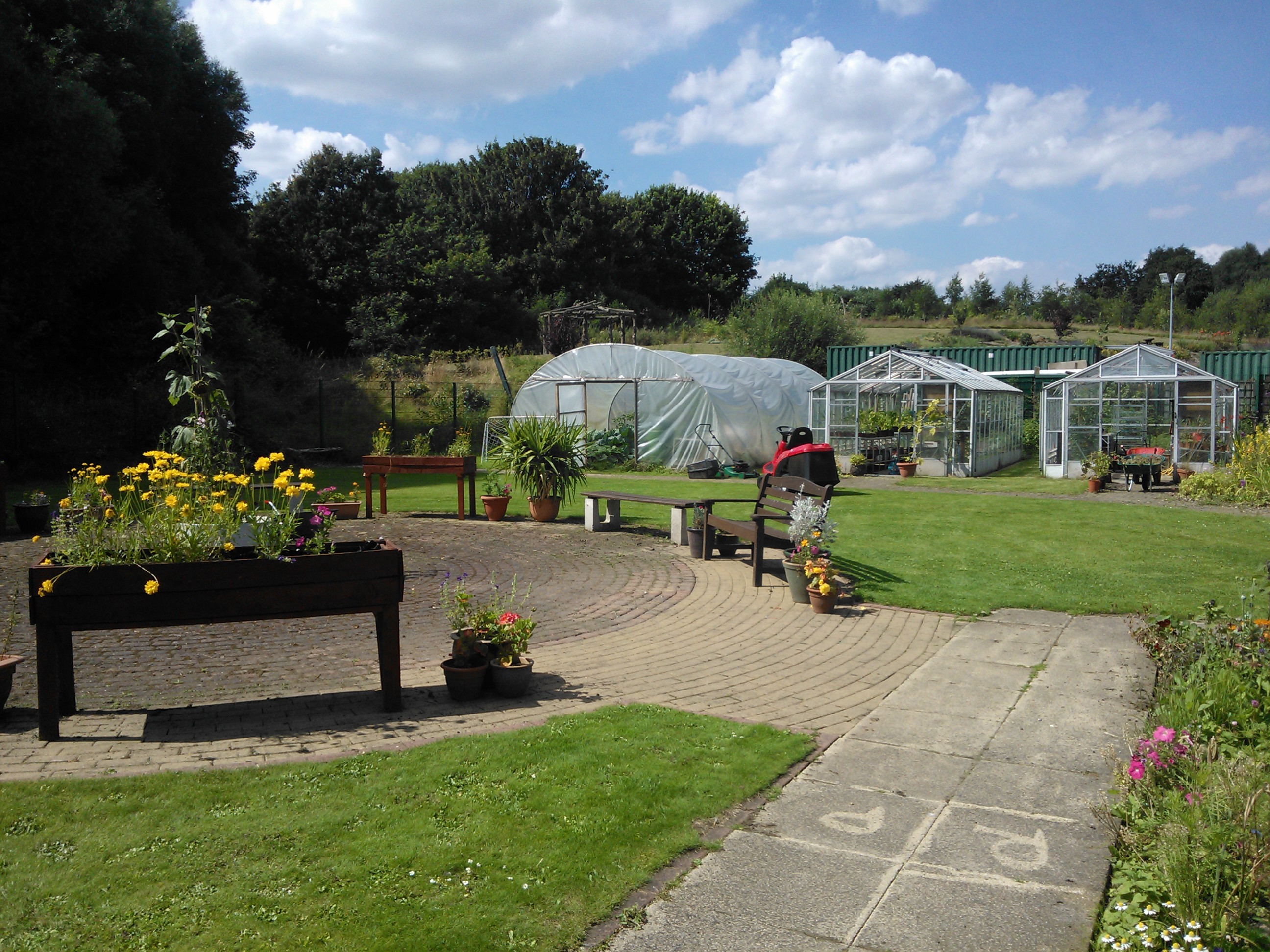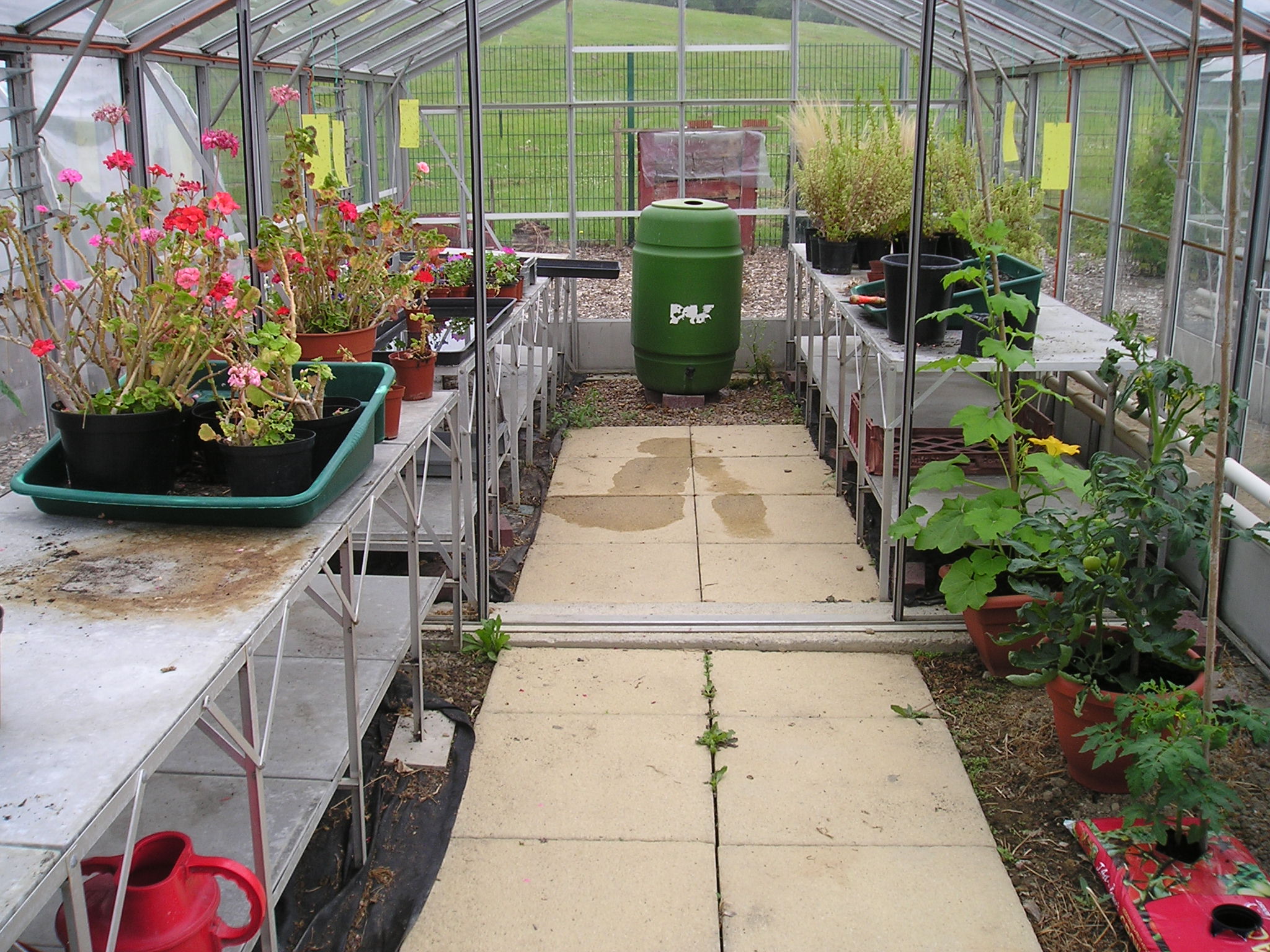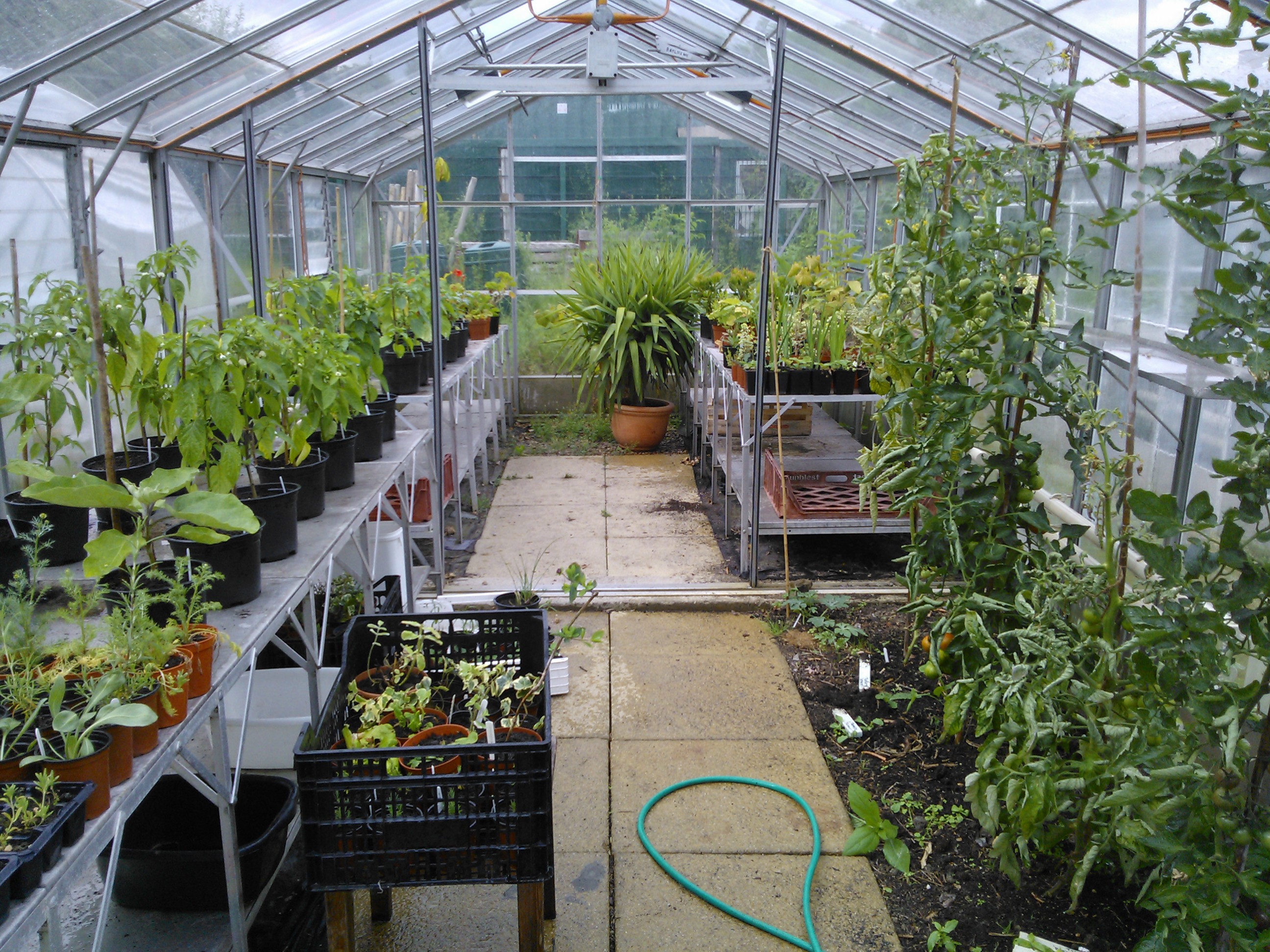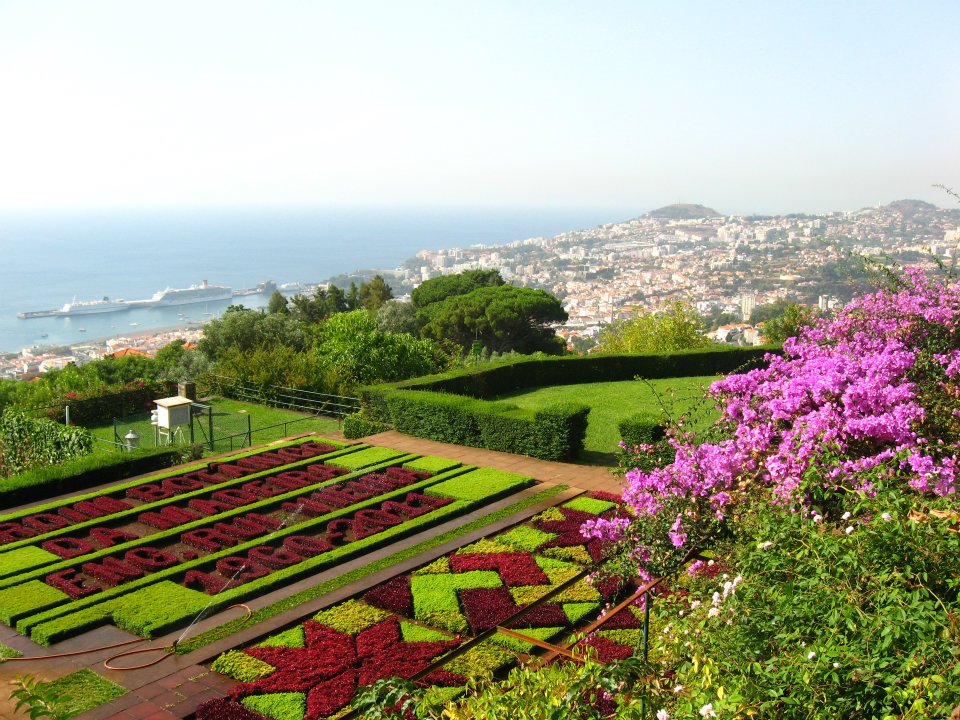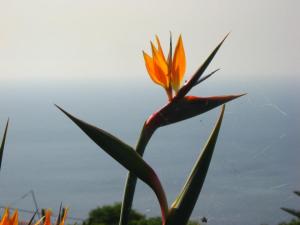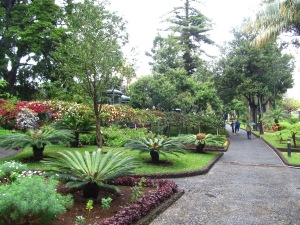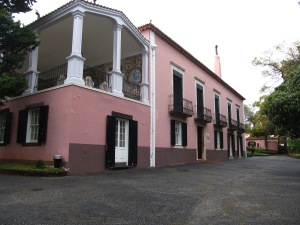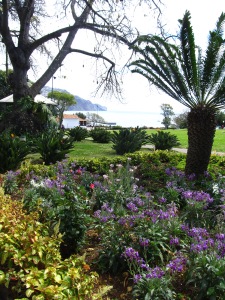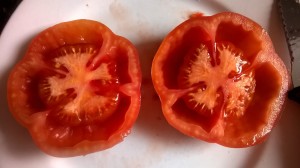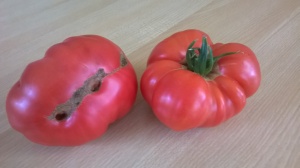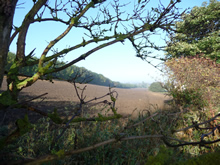A quest to discover the best method of growing melons in the North of England.

A poster of Suttons Melons, I can only find ‘Hero of Lockinge’ still in existence (though only just hanging on!).
I have been fortunate to have some previous success (and a couple of failures) when trying to grow melons. The successes came when I worked at the Horizon Centre and in all truth I planted them, watered them, fed them, the usual routine without really trying and understanding the conditions the required. I have been wanting to try for a while and after re-watching the fabulous Victorian Kitchen Garden I decided to really try and grow them.

Watermelon ‘Sugar Baby’ 
Cantaloupe Melon 
In the Horizon Centre greenhouses
After spending lots of time trying to reasearch the best techniques and requirements melons liked in the UK I decided to add this to the blog, mainly because there isn’t much info at all. The best I have found is from Bob Flowerdew’s website :
http://bobflowerdew.com/melons-and-watermelons
I have also found the RHS Growing Fruit by Harry Baker an excellent and very thorough book to have for all fruit but by far the most detailed for melon growing. I have been following the advice to the ‘T’ in my greenhouse this year (2020).
Its worth pointing out at this stage that the only melons that can be realistically be grown (as far as my research takes me) are cantaloupes (musk) – the netted and ribbed types and the early watermelons and always under cover: greenhouse, polytunnel or cold frame.
I admit to not spending a great deal of time looking at watermelons at this stage but I believe if you are going to attempt these you want to be looking at the earlier modern and F1 varieties. The success I had previously was with ‘Sugar Baby’ which was grown in a growbag, on greenhouse staging, two plants to a grow bag. They produced two small melons on one plant and one larger on the other.

Heirloom Melon ‘Hero of Lockinge’. Bred at Lockinge Park estate in Oxfordshire. 
‘Hero of Lockinge’ in The Melon by Amy Goldman
I cause myself some problems here because I am very much into growing, preserving and saving the seeds from heirloom varieties of anything edible. This is a problem because the more modern and F1 melons are bred for colder shorter climates than where melons traditionally grow, which means your chances of success are higher, but…
I wanted to grow the old types, those that are in danger of being lost, those which you dont see on the stands in garden centres, they hold romance and I am sold on the stories, as well as how important it is to preserve our history and genetic food diversity.

Blenheim Orange 
Green Nutmeg
So, armed with the RHS Growing Fruit book over the winter I set plans in action. I have previously bought seeds of ‘Green Nutmeg’ from Pennard Plants and ‘Blenheim Orange’, another Victorian variety bred in Oxfordshire, at Blenheim Palace. I had space for three in my glasshouse at home, two of one, one of the other, all planned out in good time.
But then… I read the accompanying book The Victorian Kitchen Garden where they grew ‘Blenheim Orange’ and ‘Hero of Lockinge’ so off I went in search of ‘Hero of Lockinge’ and I could find it…. nowhere, the internet ran dry. In a final attempt I searched twitter, nothing, then facebook… and I came across the Heirloom Cucurbits group, full of brilliant pumpkin, squash and melon growers, specialising in the old rare types. I joined, made a post about ‘Hero of Lockinge’ and in no time some seeds were flying over from Spain during lockdown (the supplier was a lovely guy who grows and preserves many old seeds, especially melons, he is on Instagram – semillas_la_peba) with the promise of regular growing advice. Now I had a serious dilemma. This being that melons cross pollinate easily, which means seed from a grown melon wont come true, unless you only grow one variety or protect them from cross pollinating. With seed being so scarce, the variety at risk of becoming extinct and my, well frankly obsession for heirlooms, do I grow just all ‘Hero of Lockinge’ to try and gain some of my own seed? All the winter plans in tatters?
Well, in my wisdom (or madness) and quest to save the seed, I chose, for better or worse to grow all ‘Hero of Lockinge’. Then, I thought, what about the polytunnel at work? So I decided to grow ‘Blenheim Orange’ and ‘Annas’ which was a variety I was kindly given by a Thomas Etty Seeds.
April 2020

Germinating melon seeds in using the wet paper towel method.
Mid to late April is usually when I start my seeds indoors for planting out in the garden late May/Early June (we are usually frost free here from the last week in May here) and for my greenhouse plantings – mainly tomatoes and chillis previously.
I was given a tip to start melon seeds using the wet paper towel method and it worked exceptionally well. I usually germinate in steralised pots in peat free compost in my heated propagator. With the wet paper towel method you line a container with paper towel in the bottom and get it fully damp, but not soaking, place the seeds on, another damp paper towel on top, put on a lid (or clingfilm if you dont have one) and put in the heated propagator. If you dont have a propagator you could put it on top of a radiator or on a sunny windowsill. When the seeds have germinated to the stage in the picture above gently take them out and place them just under the surface of some compost in a pot and gently cover. Place back in the propagator or warm place until they have emerged from the compost.
Once they have germinated this is the first vulnerable stage for melons, and let’s acknowledge this now, they are very temperamental plants to grow, is when they have their seed leaves and early true leaves. They are vulnerable to cold drafts and cold nights as well as the stem becoming wet and rotting – this is one of the most common failures of melons. To combat this took the melons out of the propagator during the day and then back in at night. If they are left in the heated propagator they can become etiolated (or leggy) at this stage quickly. I then moved on to moving to them to the greenhouse in sunny weather, then back to heated propagator and then just into the house when they had outgrown the propagator. I watered from the top of the pot, avoiding getting water near the stem at all costs, in fact, the compost remained visibly dry near the stem throughout their time in the pots.
May 2020
The excellent spring weather of consistent sunny warm days and above 12c nights continued through the start of May with the soil warming up and growth across the garden coming into full flow. However, I have been here before, you get lulled in that summer has arrived and the frost has gone and on the 15th of May it hadn’t. Potatoes were frosted overnight. Fortunately I had delayed planting anything tender, inside or outside the greenhouse. By the 20th of May the long term forecast had night temperatures over 10c into June (take note of 10c being important, we’ll come to that later). By June, in this area of the North, the risk of frost has gone. It was time to plant.
I decided to follow the RHS method from the book of planting directly into the greenhouse soil, but on mounds to help heat the soil and improve drainage (as per the RHS advice). The soil was a mix of old turf loam, well rotted manure (about a 1/4) and some slow release fertiliser in the form of chicken manure pellets. I formed the mounds around pots of the same size so that I could drop the plants in. I went to all this trouble to overcome another major cause of melon growing failure, root transplant shock. This is when melons react badly to root disturbance and simply collapse and die. I waited until the plants had four true leaves so that they would have filled the pots with roots but before becoming root bound. I wanted this to happen so that the soil would not collapse and expose the roots when I was planting in their final positions. It is also important to have the level of the compost in the pot to be 2.5cm (1 inch) above the level of the soil in the final position. This is to make sure that any water does not sit near the stem, avoiding the danger of any future stem rot.

Ground prepared for melon planting 
Planted and dusted with yellow sulphur
I made a video on how I plant my cucurbits to prevent stem rot and root disturbance shock.
So nervous I was about the risk of transplant shock and the fact that I had taken on these rare seedlings that I planted one and left it four days to make sure my technique was right before committing to planting the other two. It was, so they were planted with no issues. The second melon growing hurdle successfully completed.

Blenheim Orange in Polytunnel 
Melons in Polytunnel
A week or so later I planted out two ‘Annas’ and one ‘Blenheim Orange’ seedling in the polytunnel. As the tunnel does not have beds to plant in I went for large black pots (approximately 30cm wide) which I had and I raised plants up on mounds in the middle of each pot. In all truth they had probably stayed in their small pots too long and were looking a bit nutrient deficient. I was also struggling for compost due to lockdown so the pots were filled with compost made from mainly bark chippings which was available on site. Hardly ideal, but what was there to lose?
Throughout the rest of May the weather continued very favourably and consistently and they all started to put on some nice growth going into June.
June 2020
The weather continued into early June but towards the end started to change, become unsettled, duller and cooler. Oh! Another potential challenge.

Hero of Lockinge 
Female melon flower
The greenhouse ‘Hero of Lockinge’ were looking great, about 4ft tall and fulll of male and female flowers with new ones coming daily. At this stage it is worth talking about how melons flower and fruit. All melons produced male and female flowers separately on the same plant (they are called monoecious and include all of the cucurbits: cucumbers, squash, watermelon, pumpkin and courgette) so pollen needs to be transferred from the male flower to the female flower (the one with the immature fruit behind it). In nature and when grown outside insects carry out this procedure for us but under cover this can be an issue so it is advisable to open the doors during the day as much as possible. However, all the curcubits are promiscuous and happily within their genius, which is no good for saving seeds as they might not come true. It is the main reason I grew only ‘Hero of Lockinge’ in the greenhouse so I knew that any fruit would produce true seed. Pollination can be helped and controlled though hand pollination, which can be done by using a small brush and taking pollen from the male flower and brushing it on the female flower parts. The preferred method of melon growers it seems is to remove the male flower, pull off the petals and rub in the male flower onto the female one.
Here is an excellent video on how to hand pollinate melons.
Everything was going well, all to plan, lots of flowers, some pollination going on and then, you remember I mentioned the weather? Too good to be true? Sadly it was. We hit the an unsettled spell at the end of June and into July. When I say unsettled, I mean, wet, overcast and cold, very cold for July. There were several sub 10c nights in a row. At the time, I didn’t realise the impact of this. In July, I did.
July 2020
The damage the period of cold started to show when the heat of July resumed. The melons in the greenhouse started to wilt in the midday sun. Now, this is not uncommon for the cucurtbit family, particularly earlier in the summer as the big leaves lose water quicker than they can take it up with their roots as the plants grow so fast. However, these were established plants. What appears to have happened is that the cold soil (below 10c) caused the roots to rot, then, when the heat came back the roots did not match the top growth.
The major issue came shortly afterwards. As you can see from the pictures the fruit had started to set and grow, then suddenly it stopped, they turned yellow and fell off. This is what they do with many fruits which have not been pollinated, these had been, the plant was aborting them (and flowers) due to stress.
July continued hot a sunny, plus 30c days in the greenhouse being a regular occurrence. The plants started to recover, less wilting and then, towards the end of the month started to flower again. What would August bring?
August 2020
I was away from the garden, both home and work for the first two weeks of August, my neighbour and mum kindly providing the care for all my plants.
I returned to find something interesting and exciting.
From the new round of flowers a fruit had set on one of the plants. It started swelling quickly and as we continued throughout August it was looking good. Ideally, the fruit would be coming into ripeness this month, not swelling rapidly. I was hoping September would be kind with the weather and give it a chance to come to fruition. Unfortunately, the end of August had different ideas. We dropped back into another unsettled cool period, back to low overnight temperatures and given the previous problems this had caused I had to try and prevent the root rot.
Having read some Bob Flowerdew posts on his melon growing he puts bottles of water in his cold frames. The idea being that the sun heats them up during the day and they slowly release that heat into the soil overnight. It was worth a go, anything was worth a go!
September 2020
September was a lovely month weather wise. Steady sun and heat. I love the light in September, the lower light casts lovely shadows and a golden glow, despite it being inescapable that summer is slipping away, rather quickly.
The pictures show ‘Hero of Locking’ netted for support. It was doing well but always fighting against the lost of light and subsequent night time temperatures. I even resorted to hot water bottles on some nights past the middle of the month, but it was all too late. Time, light and heat were against me and the melons.
I was close, so close, but ‘Hero of Lockinge’ 2020 did not come to fruition. But, this year, in my first real year of melon growing, I learnt a lot and got me thinking on what the problems were and how to overcome them in future. Once the disappointment is over, that is a significant part of gardening – learning.
Work Polytunnel Update
As mentioned early in the post I decided to grow some heirloom melons in my work Polytunnel. Two ‘Blenheim Orange’ and two ‘Annas’.
The ‘Blenheim Orange’ was much shorter and earlier branching in habit and produced many more flowers and set a lot of fruit (five on one plant, which I decided to thin to three). In total four, one of which was lost and another did not ripen in time.
‘Annas’ grew much taller and quicker. A main stem with a few side shoots. A lot less flowers but three fruits set across two plants. One of them did not ripen in time.
One major problem I had with the polytunnel plants is irrecugular watering. I was not there everyday, mainly every other day, particularly this year which was so disrupted by Covid and the students being away during lockdown. This caused one of the ‘Blenheim Orange’ to split badly, to the point it needed to be removed and composted. Some of the other displayed some cracking, where I was lucky. I need to rectify this next year.
To try and keep the soil in the pots warm as we entered September I bubble wrapped them.
Conclusion and 2021 Plans
Without going over in too much detail mentioned in the above posts what I have learnt:
- Melons require heat at the roots and below 10c and they can start to rot.
- Growing in mounds of soil in the greenhouse, whilst entertaining to set up, does not ensure adequate warmth to the roots.
- I need a plan to keep the roots/plants warm in erratic cold spells.
- Growing melons in Yorkshire, is definitely achievable with a few tweeks.
Plan to improve chances of success next year:
- Obtain and grow some of the earlier heirloom varieties, such as Petit Gris de Rennes, Minnesota Midget, Noir des Carmes, Early Frame Prescott etc.
- I bought The Melon book by Amy Goldman, which is not cheap, which includes some useful tips on growing, not so much under cover, but their requirements such as a pH between 6-6.5 in order to take up the nutrients it needs (I will play around with either a mix of bought compost and added ericaceous compost or adding sulphur to bought compost to achieve this). It’s also very useful for determining the early and mid-season varities.
- The book also includes good info on the use of black plastic mulch/row covers to keep the soil warm and warm the soil before planting. I might try this outside.
- I also did a re-watch of the Victorian Kitchen Garden and re-read the book during lockdown. There they always grew melons on raised metal racks to reduce soil cooling and improve drainage. So I built a rack for the greenhouse, which also came in handy for drying onions (see picture above). I am going to raise them up further with another row of breeze blocks.
- I am also going to use grow bags on the raised mesh. The grow bag should replicate the black plastic mulch described above. Looking back at my earlier successes with melon and watermelon I grew them in grow bags on the greenhouse staging.
- I am tempted to plant them out a little earlier (mid-may) in the greenhouse and protect them should there be a late very cold spell (such as a frost). With the grow bags I can actually put hot water bottles on the plastic and keep the roots warm over night. I also picked up a cheap paraffin heater from gumtree.
- I am going to grow a range of melons in my home greenhouse and polytunnel at work.
I also found some excellent videos from someone who grows melons outdoors in Canada in shorter climate than myself. This one shows his protection set up for earlier in the year.
I have also been holding back on buying every heirloom early fruiting melon seed I see but I came across but I did end up adding ‘Cantalun’ melon from The Heritage Seed Library.
Let’s see what 2021 brings……………
















